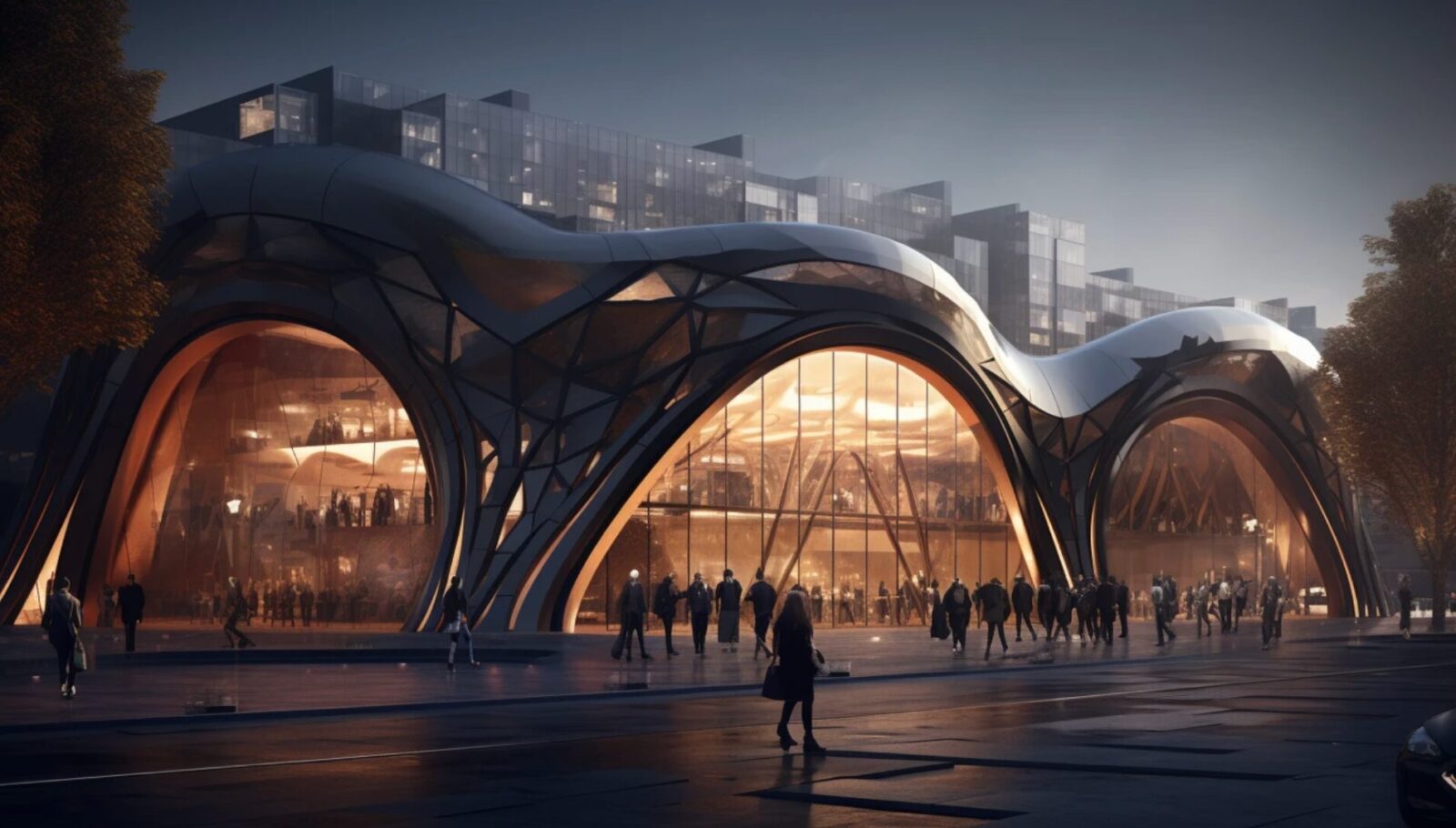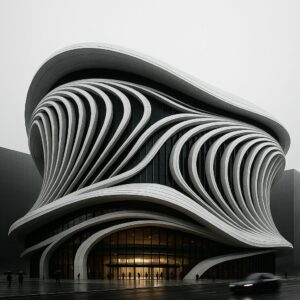Designing the Future: An Interview with Architect Ali Cadir

I had the chance to speak with Ali on the occasion of his featured talk at World Stage Design. We discussed his journey into 3D printing and architecture, the role of AI and digital tools in shaping design, and his vision for the future of creative spaces.

Ali Cadir is a Dubai-based architect known for delivering high-end architecture, interiors, and immersive spatial experiences across residential, commercial, and cultural projects. With accreditations from RIBA and ARB, Ali brings international expertise from firms such as Meinhardt, PLP Architecture, and NORR. He is also the founder of Bendr 3D, a design-led 3D printing venture helping professionals in architecture, prototyping, product design, and creative production. Merging physical craft with digital innovation, he explores the intersection of storytelling, materiality, and wellbeing through emerging tools like AI, generative design, and 3D manufacturing. His cross-disciplinary approach draws from architecture, art, technology, and performance, creating work that’s both conceptually rich and experientially powerful. Featured inWallpaper,RIBA Journal, andRIAS, Ali is also a passionate voice for the next generation of designers, regularly speaking, teaching, and mentoring across platforms and institutions. I had the chance to speak with Ali on the occasion of his featured talk at World Stage Design. We discussed his journey into 3D printing and architecture, the role of AI and digital tools in shaping design, and his vision for the future of creative spaces.
Anna Robb: You worked with some well-known international firms before founding Bendr 3D. What inspired you to start your own venture?
 Ali Cadir: Bendr started out of frustration, really. In traditional architecture, we’re often limited by conventional methods of building. I found that this restriction blocked my creativity. The first time I really felt the need for 3D printing was during a university project in Edinburgh. I wanted to create a space that captured the conditions of a site, things like light intensity, temperature, and humidity. I built custom Arduino sensors, collected data onsite, and tried to translate it into architecture. The geometries became so complex that traditional methods couldn’t keep up. That’s when I turned to 3D printing and robotic fabrication. It allowed me to create intricate, layered forms that expressed data as physical design. That spark stayed with me.
Ali Cadir: Bendr started out of frustration, really. In traditional architecture, we’re often limited by conventional methods of building. I found that this restriction blocked my creativity. The first time I really felt the need for 3D printing was during a university project in Edinburgh. I wanted to create a space that captured the conditions of a site, things like light intensity, temperature, and humidity. I built custom Arduino sensors, collected data onsite, and tried to translate it into architecture. The geometries became so complex that traditional methods couldn’t keep up. That’s when I turned to 3D printing and robotic fabrication. It allowed me to create intricate, layered forms that expressed data as physical design. That spark stayed with me.
Anna: And where is Bendr 3D now? What kinds of projects are you working on?
Ali: Right now, Bendr is still in R&D. I’m experimenting, developing methods, and exploring how to push the boundaries of data-driven architectural elements. It’s not yet in full practice use, but the research stage is where exciting possibilities emerge.
Anna: You often experiment with AI and digital tools. How do you see them shaping architecture?
Ali: For me, the excitement is in the ease of creation. Once you remove buildability as a limitation, your creativity opens up. AI is powerful for generating ideas, analyzing data, and even programming spatial layouts. But I don’t believe it can replace the human element, the emotional intelligence that comes from designing for people. AI is only as good as the inputs you give it. Still, it’s a great way to explore “what could be.”
Anna: What’s been one of your favorite projects so far?
Ali: One of my research projects, actually the same one I mentioned earlier, in Edinburgh. It pushed the boundaries of creating a space that embodied the DNA of a site. It forced me to think about responsive systems, architecture that adapts in real time, like kinetic facades or interactive environments. That idea, of architecture responding to data and people, continues to fascinate me.
Anna: You’ve also explored immersive and entertainment spaces. How do you approach those?
Ali: Mostly through installations and experimental projects. I’ve worked with robotic elements, kinetic systems, AR, and VR. When you overlay digital layers onto physical space, you get hybrid experiences like Pokémon Go, but on an architectural scale. I find it exciting to explore how digital forms can reshape the way we experience cities, whether for tourism, festivals, or storytelling.

Anna: Storytelling seems to be a big part of your process. How does it shape your work?
Ali: Architecture, for me, is a collection of simultaneous stories. Each space, a plaza, a corridor, a lobby, tells a different story and creates a unique experience. I always start by looking at the story of the place and its people, then shaping spaces around that narrative. Even at the sketch stage, I make sure to include human figures. It reminds me that every design begins and ends with people.
Anna: You’ve worked in both the UK and Dubai. How has that influenced your perspective?
Ali: London is layered and dynamic. One streetscape can transform throughout the day morning cafés, afternoon runners, evening pubs. Dubai is different. The climate and culture make spaces more secluded, with malls acting as social hubs. Walkability is limited, but there are projects aiming to change that. The contrast between these cities shows how much design is shaped by culture, climate, and history.

Anna: You mentor young designers. What advice do you give them?
Ali: Many ask about software and AI which are essential tools but my main advice is to think critically. Ask why you’re placing an element in a space, and design with people in mind. Don’t just master tools; develop reasoning. And don’t be afraid of failure. Messy sketches and failed 3D prints are part of the process. They often spark new ideas.
Anna: What do you love most about your work?
Ali: The creative freedom. I can look at a single space and imagine infinite possibilities. That ability to experiment, to model new worlds, is deeply enjoyable.
Anna: And if you could change one thing about the industry?
Ali: The obsession with perfection. We measure down to the millimeter, but perfect doesn’t always mean good design. I think we need to embrace imperfection, allow processes to be messy and exploratory. That’s where creativity thrives.
Anna: Finally, what advice would you give young people who want to break into architecture and design?
Ali: Think outside the box. Don’t limit your skills to one type of project or one kind of client. Experiment and explore crossovers — gyms and libraries, housing and cultural spaces. New typologies emerge when you’re open to blending ideas. That’s how you stand out, get noticed, and contribute something fresh to the community.

At the World Stage Design (WSD 2025) Ali will be exploring how robotics is shaping the future of performance architecture, creating dynamic, adaptive environments that blend innovation with cultural legacy. He will discuss how technology can redefine storytelling, acoustics, and spatial design, setting the stage for a new era for performance design and cultural heritage. World Stage Design (WSD) is the first and only designer-based exhibition to showcase and celebrate performance design from individual designers. Held every four years, WSD has now travelled to five cities: Toronto, Seoul, Cardiff, Taipei, & Calgary. The sixth WSD exhibition will be held in Sharjah, UAE from Saturday 18th – Saturday 25th October 2025. World Stage Design 2025 will be co-produced by Sharjah Performing Arts Academy and OISTAT.
All images are courtesy of Ali Cadir and his design.
Editor's Note: At StageLync, an international platform for the performing arts, we celebrate the diversity of our writers' backgrounds. We recognize and support their choice to use either American or British English in their articles, respecting their individual preferences and origins. This policy allows us to embrace a wide range of linguistic expressions, enriching our content and reflecting the global nature of our community.
🎧 Join us on the StageLync Podcast for inspiring stories from the world of performing arts! Tune in to hear from the creative minds who bring magic to life, both onstage and behind the scenes. 🎙️ 👉 Listen now!